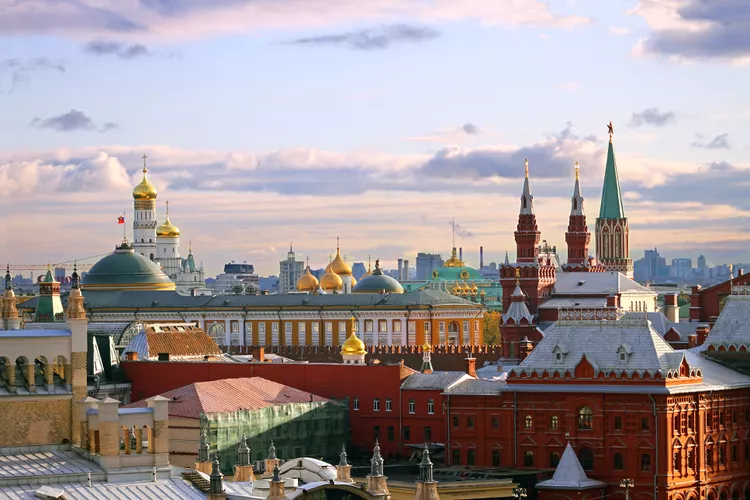Summary
The Kremlin Dominates the City Center
You say the word “Moscow” to Americans, and it conjures up the Kremlin, Red Square and images of intensely cold winters against the backdrop of colorful onion domes.
Moscow was Russia’s capital before Peter the Great moved it to his new city, St. Petersburg, in 1712. Subsequently, it regained its role as the capital of the Soviet Union after the Russian Revolution, with the government returning to Moscow in 1918.
Despite various political changes, Moscow has always retained its intensity and spirit, inspiring writers and poets, captivating the nobility, and serving as the center of Soviet mystique during the Cold War. Consequently, Moscow encapsulates both the Russia of yesterday and the Russia of today.
City Statistics
Moscow, as Russia’s bustling capital city, was home to more than 12 million residents as of 2015, according to the CIA World Factbook, along with countless non-residents. The population consists mainly of ethnic Russians, with a variety of other groups represented in relatively small numbers.
Interestingly, Moscow ranks as one of the world’s most expensive cities. As an international business hub, numerous corporations have established branches in the city since the fall of the Soviet Union in 1991. The hospitality industry has notably expanded to accommodate this growth, ensuring that Moscow continues to thrive economically.
History
The Kremlin is the seat of Russia’s government, serving as both an opulent and imposing house of power located in the heart of the city. The architecture, which dates back to the reign of Ivan the Terrible (1533 to 1584), offers insight into Russia’s unique historical narrative. One of the remarkable buildings is the iconic St. Basil’s Cathedral, situated on Red Square near the Kremlin.
Home to Russia’s Greatest Writers
Moscow is deeply intertwined with the lives of Russia’s most celebrated writers. Many resided in the capital at various points, leaving significant traces for literary enthusiasts to uncover. The city hosts numerous museums dedicated to these authors, providing a glimpse into their contributions to literature.

Center of Art and Art History
Although St. Petersburg features impressive collections at the Hermitage, Moscow’s significance in the art world is epitomized by the Tretyakov Gallery. This extraordinary museum is pivotal in showcasing the masterpieces of renowned Russian artists like Repin and Vrubel.
Additionally, the Armory Museum houses a remarkable collection of the jewels, crowns, thrones, and carriages of royal Russia. The State Diamond Fund within the Armory preserves these vital symbols of Russia’s imperial heritage.
Weather
Moscow is infamous for its harsh winters that can extend until April. Summers are generally hot yet manageable. Therefore, the optimal times to visit Moscow are from May to September. However, the traditional Maslenitsa festival takes place in February or March, making winter visits surprisingly rewarding. If celebrating Maslenitsa, consider exploring various winter activities during your stay.
Getting Around
Moscow’s metro system is both fast and efficient, allowing travelers to navigate the city with ease. Although it may seem overwhelming at first, the metro provides an inexpensive means to explore various regions of the city. Furthermore, the metro stations are attractions in their own right, featuring opulent decorations crafted by skilled artisans.
Staying in Moscow
Russia’s capital is known for its high living costs. Generally, accommodations nearer to the city center tend to be pricier. For budget-conscious travelers, staying outside the central districts and utilizing the metro for transportation offers a practical and economical solution.





